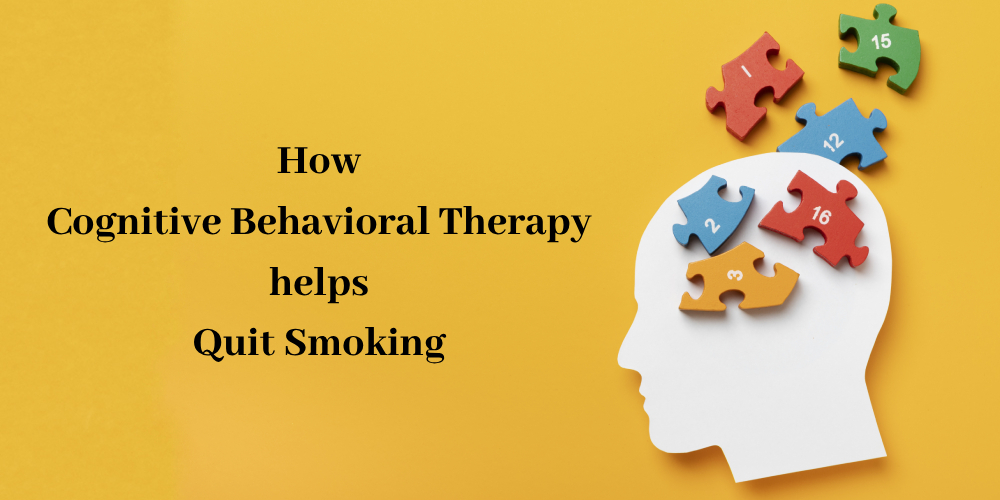
How Cognitive Behavioral Therapy Helps for Smoking Cessation
Breaking free from smoking can feel like climbing a mountain. You might have tried quitting multiple times, only to find yourself lighting up again. It’s frustrating as well as disheartening, but please don’t lose hope. Cognitive Behavioral Therapy (CBT) might be the game-changer you need to finally quit smoking for good. Let’s dive into how CBT works and how it can help you kick the habit.
Understanding the Smoking Habit
First, let’s talk about why smoking is such a tough habit to break. Smoking isn’t just about a physical addiction to nicotine; it’s also deeply embedded in your daily routines, social interactions, and emotional coping mechanisms. Over time, smoking becomes a crutch, a go-to stress reliever, or even a social activity.
This is where Cognitive Behavioral Therapy comes into play. CBT is a form of psychotherapy that aims to identify and modify negative thought patterns and behaviors. It’s about rewiring your brain to think and react differently. When applied to smoking cessation, CBT helps you understand the underlying triggers and develop healthier ways to cope with cravings.
The Science Behind CBT and Smoking Cessation
Research has shown that CBT can be highly effective for smoking cessation. A meta-analysis published in the journal Addiction found that individuals who received CBT were more likely to quit smoking and remain abstinent compared to those who received standard care or no treatment at all. The study highlighted that CBT provides a structured approach to identify and address the psychological aspects of smoking addiction, which are often overlooked by other cessation methods.
Another study in the Journal of Consulting and Clinical Psychology showed that CBT, combined with nicotine replacement therapy (NRT), significantly increased quit rates. The research indicated that the combination of behavioral therapy and pharmacotherapy addresses both the physical and psychological components of addiction, leading to more sustainable outcomes.
Identifying Triggers and Patterns
The first step in CBT is identifying the triggers that make you want to smoke. These could be emotional states like stress or boredom, social situations like hanging out with friends who smoke, or even specific times of the day. This process, often referred to as functional analysis, helps in mapping out the specific contexts in which smoking occurs.
Example: You might notice that you crave a cigarette every time you finish a meal. This is a habitual trigger that CBT can help you address.
Once you identify these triggers, CBT helps you understand the thought patterns that accompany them. For instance, you might think, “I need a cigarette to relax,” which reinforces the habit. CBT works to challenge and change these automatic thoughts.
Challenging Negative Thoughts
CBT teaches you to question the validity of your smoking-related thoughts and beliefs. Are you really “needing” that cigarette, or is it just a conditioned response?
Example: Instead of thinking, “I can’t handle stress without smoking,” CBT encourages you to reframe this thought to something like, “I can manage stress through healthier means, such as deep breathing or going for a walk.”
A study published in Nicotine & Tobacco Research found that cognitive restructuring, a core component of CBT, significantly reduces smoking-related cognitive biases. By challenging and changing these thought patterns, individuals are less likely to rationalize their smoking behavior and more likely to adopt healthier coping strategies.
Developing Healthy Coping Strategies
Once you’ve identified your triggers and challenged your negative thoughts, the next step is to develop healthier coping strategies. These are alternative actions you can take instead of smoking when you encounter a trigger.
Example: If you smoke to relax after a stressful day, CBT might suggest activities like yoga, meditation, or listening to calming music as alternatives.
A research article in Health Psychology demonstrated that individuals who developed alternative coping strategies through CBT were more successful in maintaining smoking cessation compared to those who did not receive such training. These new coping mechanisms not only help you avoid smoking but also contribute to your overall well-being.
Behavioral Experiments
CBT often involves practical exercises known as behavioral experiments. These are designed to test out new ways of thinking and behaving in real-life situations.
Example: If you believe you can’t enjoy social gatherings without smoking, you might be encouraged to attend a party without cigarettes and observe how you feel. Over time, you’ll likely discover that you can still have fun and socialize without smoking.
These experiments help to reinforce the new, healthier behaviors and thoughts you’ve been working on in therapy. A study in Behaviour Research and Therapy found that behavioral experiments were effective in reducing smoking-related anxieties and improving self-efficacy among participants.
Building a Support System
Quitting smoking is easier when you have support. CBT often involves working on communication skills and building a support network. This could mean reaching out to friends and family for encouragement or joining a support group.
Example: You might practice ways to assertively decline a cigarette when offered by a friend, or share your quitting journey with supportive loved ones who can cheer you on.
A systematic review in the Cochrane Database of Systematic Reviews concluded that social support, both professional and personal, plays a crucial role in successful smoking cessation. The review emphasized that CBT’s inclusion of support-building strategies enhances its effectiveness.
Relapse Prevention
Relapses are common when quitting smoking, but they don’t mean failure. CBT equips you with strategies to handle setbacks and get back on track.
Example: If you slip and have a cigarette, CBT encourages you to analyze what happened, learn from the experience, and plan for how to handle similar situations in the future.
This proactive approach helps you to view relapses as learning opportunities rather than failures, maintaining your motivation to quit. Research in the Journal of Substance Abuse Treatment found that CBT-based relapse prevention significantly reduces the likelihood of relapse compared to standard treatment.
Integrating CBT with Pharmacotherapy
While CBT is powerful on its own, combining it with pharmacotherapy can enhance its effectiveness. Nicotine replacement therapy (NRT), medications like varenicline (Chantix) or bupropion (Zyban), and other forms of counseling can complement CBT and provide a comprehensive approach to quitting smoking.
A study published in The Lancet found that combining CBT with varenicline significantly increased abstinence rates compared to varenicline alone. This combination therapy addresses both the physical cravings and the psychological aspects of smoking addiction, offering a more holistic approach to cessation.
The Long-Term Benefits of CBT for Smoking Cessation
The benefits of CBT extend beyond immediate smoking cessation. Research has shown that individuals who undergo CBT for smoking cessation experience long-term improvements in mental health and quality of life. A study in Psychological Medicine found that individuals who successfully quit smoking through CBT reported reduced symptoms of depression and anxiety over a five-year follow-up period.
Additionally, the skills learned in CBT, such as stress management, cognitive restructuring, and problem-solving, are transferable to other areas of life. This means that the benefits of CBT can extend to improving overall psychological resilience and well-being.
Final Thoughts
Quitting smoking is undoubtedly challenging, but Cognitive Behavioral Therapy offers a structured, supportive, and evidence-based approach to help you succeed. By addressing the psychological aspects of smoking, CBT helps you understand your triggers, change your thought patterns, and develop healthier coping mechanisms.
Research consistently shows that CBT is an effective tool for smoking cessation, particularly when combined with other treatments like pharmacotherapy. The comprehensive approach of CBT not only increases the likelihood of quitting smoking but also provides long-term benefits for mental health and overall well-being.
Remember, the journey to quitting is personal and unique. What works for one person might not work for another, so it’s important to find the strategies that resonate with you. Whether it’s through individual therapy, group sessions, or self-help resources, CBT can provide the tools you need to overcome smoking and enjoy a healthier, smoke-free life.
If you’re ready to take the first step, consider reaching out to a therapist trained in CBT. With the right support and commitment, you can break free from smoking and achieve your goal of a healthier, happier you. Good luck on your journey!




